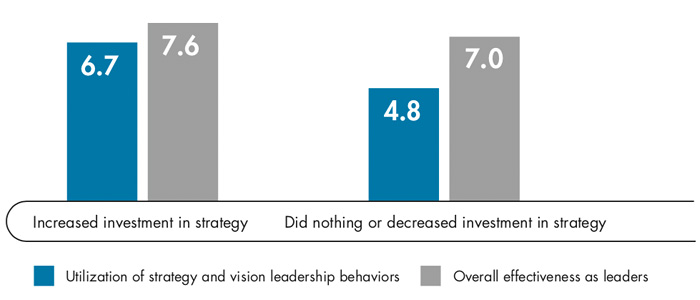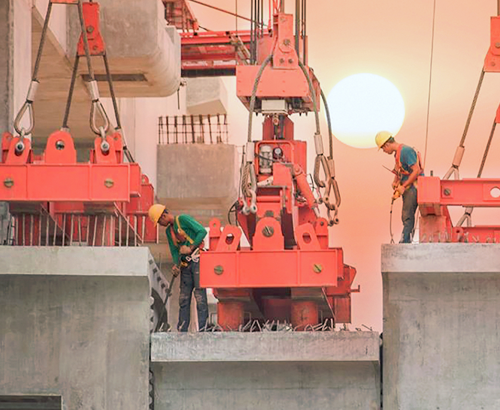Turning the Great Recession into a Learning Experience

Here are five solid lessons taken from the Great Recession that all E&C firms can be using right now to navigate the complexities of the current marketplace.
It’s been nearly a decade since organizations needed to give serious thought to how they would ride out a recession and come out stronger and more resilient. With little notice, other than the obvious signal that we were long overdue for a different economic cycle, the global pandemic put nearly all engineering and construction (E&C) companies squarely back into survival mindset. As states shut down, job sites were shuttered, and millions of employees were laid off, E&C firms suddenly found themselves in a position that most weren’t even envisioning just four to six months ago.
“Within a matter of days, contractors found themselves scrambling to figure out how to perform work while complying with social distancing and other new safety measures or wondering if they could work at all under state and local shelter-in-place restrictions,” ENR reports.1
“Compounding the day-to-day challenges has been uncertainty about what the post-pandemic economy will hold, and what strategic adjustments may be needed to survive.”
The good news is that for any company that’s 10-plus years old, this is not its first rodeo. These firms endured one or more recessions and downturns and, by rights, should have the tools they need to survive yet another one. For younger E&C companies, there were some clear lessons taken away from the Great Recession that can now be applied to the current environment. And while every downturn comes with its own set of nuances, there are some commonalities that they all share.
In this article, we take a retrospective look at what occurred during the last major downturn and share key takeaways from our recent research that all E&C companies can be using to find their way through the current turmoil.
5 Ways to Beat the Odds
Today we find ourselves at a turning point in the market. Based on what we know about the Great Recession and how it caught many companies off guard with its swift and lengthy economic downturn, there’s no excuse not to start preparing, given current events; and as these events unfold, more surprises are to be expected. Here are five things you can be doing right now to build a more resilient organization:
- Build deep relationships with clients and project partners
During the Great Recession, many companies learned the value of deep, authentic client relationships. Today the same companies use these strategies to stay relevant during any business conditions:
- Engage seller-doers. Have seller-doers build a list of contacts that they want to keep in touch with and develop a strategy for following up with clients.
- Build client management skills. Create programs and opportunities to educate your people on “how to behave in a recession,” with a focus on estimators with project selection, field managers with scope management, and project managers with cash management. Considering where and how to invest through the lens of your customer needs can be a powerful filter to use when making investment decisions.
- Don’t go it alone. Make sure that you are finding ways to “zipper in” your next generation. Encouraging interaction up and down the organization will not only increase younger people’s presence with clients but also offer them an inside track and build a foundation for collaboration among future leaders.
- Reward and call out client success. Find ways to highlight strong client relationships, rewarding talent who go above and beyond in building those relationships.
- Focus on diversification
A well-known strategy for thriving and surviving in a cyclical market, diversification was often cited by research participants as key to weathering the recession. While some companies opted to diversify into different geographies, others saw the need to diversify into private and public work where they had previous experience in either market. Be forewarned: Not all diversification approaches are created equally. Here’s how to infuse them with intentionality:
- Diversify your risks. Go beyond diversifying segments, geographies or services by also asking yourself how these various settings respond to a recession. Diversifying in two geographies with similar economies could negate the positive effects of diversification.
- Find a unique way to outperform the competition. When companies enter a new market, they are like the new kid on the block of established competitors. Develop a solid foothold by setting up strategic relationships, offering a unique service or promoting a strong pedigree of projects that local players lack. Acquisitions can also be an option to offset the cost of organic growth.
- Take an investment mindset. Entering a new territory rarely generates overnight success. View this as a long-term investment, diversify when the market is still strong, and take an honest look at your ability to compete in this new environment.
- Streamline your operations
Lean times call for agile operations that helped one construction firm stay ahead of the curve in researching and implementing lean construction concepts for several years. As the company’s processes and project management evolved, all staff worked with clients and partners (e.g., subcontractors, architects and engineers) to build awareness around lean approaches to collaborative building. “Waste in the construction industry has been talked about for decades. We are firm believers in lean construction, and clients who have participated say it has rewritten how they look at the construction process,” stated one executive.
After the last downturn, some E&C leaders admitted that the frenzy of the recession increased their focus on getting any and all jobs possible, regardless of whether those projects were a good fit.
- Invest in your people
We often hear leaders talk about cuts they’ve had to make in bad times, particularly around people development and talent management. Some variation of “learning and development efforts are nice to have but are something we simply can’t afford in tough times” is a common refrain in the industry. We saw many leaders adopt this mindset during the Great Recession, downsizing their workforces considerably and reducing expenses in all aspects of talent management.
Businesses that kept their best people compete more effectively today. The deep labor cuts from the Great Recession still haunt the Built Environment today. Our latest AGC/FMI Risk Survey showed that for the third year in a row, lack of qualified talent was the top risk for study participants, with the limited supply of skilled craftworkers being the biggest challenge for 80% of respondents. The limited supply of field supervisors became the second most critical risk (44%) and reflects the ongoing demographic shift of baby boomers cycling out of the industry.
- Create a transparent, collaborative culture
Leadership in a crisis often looks like a stoic figure, ever in control of the situation and knowing the right thing to do. Leadership is also expected to say the “right things” to reassure others and ward off chaos. For many executives, this leadership style is hard-wired. When things started going haywire, the first reflex was to protect people by not telling them everything and instead fixing things behind the scenes and acting decisively in solitude.
These leaders have since learned that transparency and open communication are better approaches. In some cases, this means having the courage to be painfully honest, admitting to mistakes and leading by example. For example, Scott Peterson, CEO of Interstates, explains his learning experience, going from the stoic leader to an authentic one and equipping leaders downstream with transparent information: “The first time [we faced a downturn], our instinct was to protect our people. We were telling them, ‘everything’s OK, don’t worry about it,’ and we tried to solve it all behind the scenes.” This time around, Peterson shared the tough information openly with his team.
“It built credibility and brought them along with us. They now had the opportunity to come with ideas to save overhead or bring a new offering or client lead forward. With all the information, it put them in a better position to help the company they know and care about get through a tough situation.”
John Cannito, president of PENTA Building Group, Las Vegas, says a willingness to immediately confront hard facts as the virus began to spread has helped his firm adjust to its impact. “We made some decisions during the Great Recession that we should’ve addressed earlier,” he admits. “This time, responding to the virus and keeping the business on track has been easier to deal with because we’d already put leadership and planning mechanisms into place.”2
Strategic Investment and Behaviors During The Recession
 Source: 2020 FMI Leadership & Strategy Survey
Source: 2020 FMI Leadership & Strategy SurveyPut Your Feet on the Ground
As E&C companies develop their business strategies for the remainder of 2020 and look ahead to 2021, new issues like the trade wars, the coronavirus, the upcoming presidential election and other uncertainties are all sure to play a role in the Built Environment. During ambiguous and volatile times, staying true to your company’s vision and core values is critical.
It’s also important to keep a close eye on your ever-evolving business context, while deciding how best to respond and act on those choices. Now is not the time to panic but instead to be proactive and keep a pulse on key factors influencing your business environment. Then, monitor those external and internal dynamics on an ongoing basis to help solidify your firm’s position in the market today and well into the future.
1 Strategic Lessons for an Uncertain Post-Pandemic Future. Jim Parsons. ENR. April 27/May 4, 2020.
2 Ibid.



